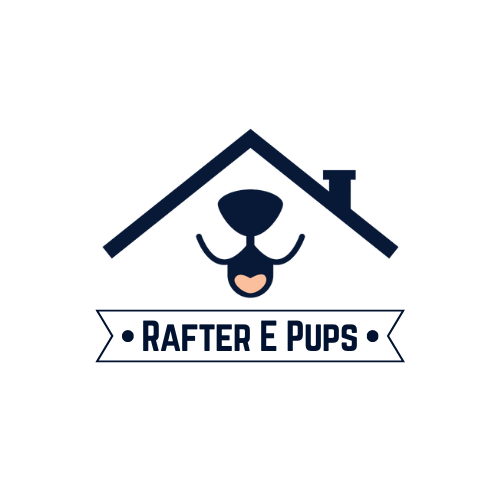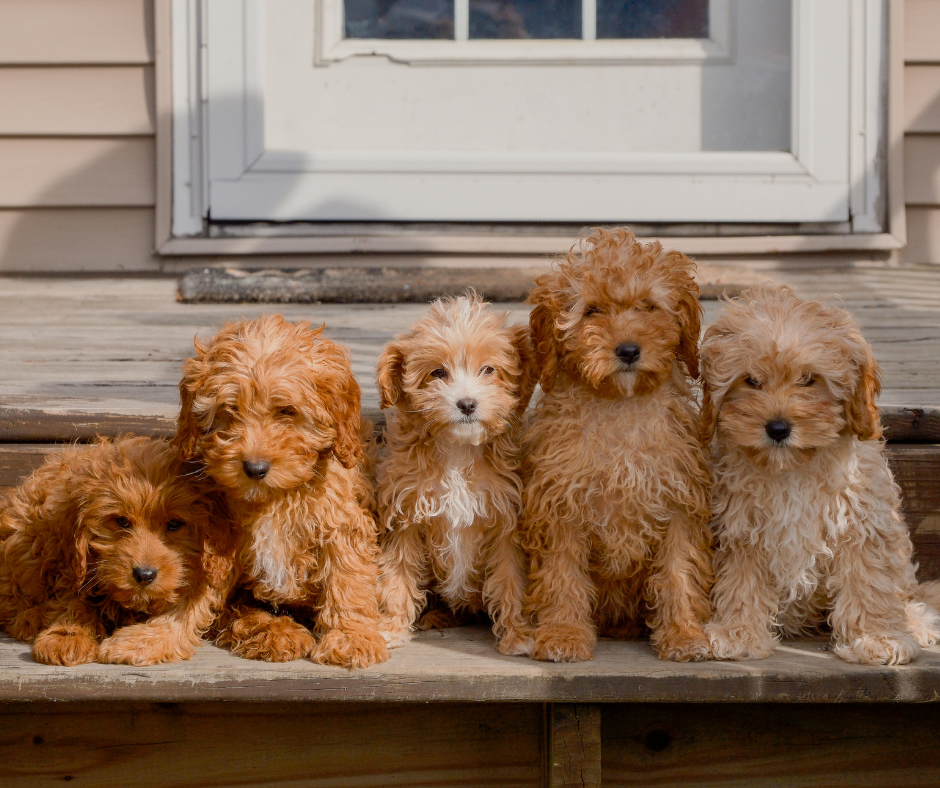Cavapoos, the adorable crossbreed between Cavalier King Charles Spaniels and Poodles, have gained immense popularity in recent years due to their charming personalities and striking appearance. Beyond their cuteness, prospective dog owners often inquire about the hypoallergenic nature of these mixed-breed dogs. The question arises: Are Cavapoos completely hypoallergenic?
Cavapoos can be hypoallergenic to some extent, primarily if they inherit the Poodle's hair type. However, no dog is entirely allergen-free, and individual reactions vary. Grooming and allergy management are crucial when living with Cavapoos to minimize allergen exposure.
What Causes Allergies to Dog?
Allergies to pets, particularly dogs, are relatively common. People with dog allergies react to proteins found in dog saliva, urine, and skin cells, known as dander. Dander is composed of tiny, even microscopic, flecks of skin shed by cats, dogs, rodents, birds, and other animals with fur or feathers. Symptoms of dog allergies can range from mild to severe and may include sneezing, runny or stuffy nose, itchy or watery eyes, coughing, wheezing, and even skin reactions.
In the quest to find a hypoallergenic dog, people often turn to designer breeds like Cavapoos. These crossbreeds are marketed as a solution to allergies because they inherit certain traits from their Poodle parent, which is renowned for its hypoallergenic qualities. However, before making a decision to bring a Cavapoo into your home, it's crucial to understand the complex nature of allergies, the genetics behind them, and the characteristics of Cavapoos that influence their hypoallergenic status.
The Genetics of Allergies
To grasp the hypoallergenic nature of Cavapoos, one must first comprehend the genetic basis of allergies. Allergic reactions are primarily triggered by specific proteins, or allergens, that the immune system identifies as harmful invaders. In the case of dog allergies, these allergens are primarily found in dog dander, saliva, and urine. However, not all dogs produce the same amount of allergenic proteins, and individual reactions to these proteins vary widely among humans.
The key factor responsible for a dog's hypoallergenic status is the type of coat they possess. The amount of shedding, the texture of the fur, and the presence of hair or fur in the first place are all significant factors. Let's explore how these genetic factors relate to Cavapoos.
What are the Different Coat Types in Cavapoos?
Cavapoos can inherit various coat types from their Poodle and Cavalier King Charles Spaniel parents, and this plays a crucial role in determining their hypoallergenic nature.
- Poodle Influence: Poodles are known for their hypoallergenic qualities because they have hair instead of fur. This hair doesn't shed in the same way that fur does, reducing the amount of allergenic proteins released into the environment. Poodle hair continues to grow and can be groomed regularly to prevent it from becoming too long. Since it doesn't shed like fur, it traps more allergens close to the skin and can be less likely to trigger allergies. When Cavapoos inherit the Poodle's hair type, they are more likely to be considered hypoallergenic. However, it's important to note that the proportion of Poodle genetics in a Cavapoo can vary, affecting the coat type and shedding patterns.
- Cavalier King Charles Spaniel Influence: On the other hand, the Cavalier King Charles Spaniel is known for its beautiful, silky, and often longer fur. This breed tends to shed more, releasing allergenic proteins into the environment, and might not be the best choice for individuals with severe allergies. When Cavapoos inherit the coat type of the Cavalier King Charles Spaniel, they are less likely to be hypoallergenic because their fur is more similar to traditional dog fur, which can shed more and release allergens.
Allergen Production and Shedding in Cavapoos
While the type of coat a Cavapoo inherits from its parents is a significant factor in determining its hypoallergenic nature, it's important to understand that no dog is entirely allergen-free. Even the most hypoallergenic dogs can produce some allergenic proteins, although their levels are typically lower than in breeds with fur coats that shed profusely.
Allergens are primarily found in a dog's saliva, skin cells, and urine. While the type of coat influences the amount of allergens that are released into the environment, other factors, such as a dog's grooming habits and general health, also play a role.
Grooming and Allergen Control in Cavapoos
Regular grooming is essential for managing allergens in a Cavapoo's coat. Proper grooming includes brushing to remove loose hair, dirt, and dander, as well as bathing to wash away allergenic proteins from the skin. For individuals with allergies, it's recommended that someone who isn't allergic handles grooming or that grooming takes place in a well-ventilated area, preferably outdoors, to reduce allergen exposure.
Frequent grooming can significantly reduce allergen levels on a Cavapoo's coat, making them a more suitable option for individuals with mild allergies. However, it's crucial to note that even with meticulous grooming, some allergens might still be present.
Health and Allergen Production
A dog's overall health can also influence allergen production. Dogs with skin conditions or allergies themselves may produce more allergenic proteins, exacerbating allergy symptoms in their owners. Responsible breeding practices and regular veterinary care can help mitigate these issues.
Personal Allergy Sensitivity
One often overlooked factor in determining whether a Cavapoo is hypoallergenic for an individual is the person's own allergy sensitivity. People react differently to allergens, and what might trigger severe allergies in one person may not affect another as profoundly.
Before bringing a Cavapoo or any dog into your home, it's advisable to spend time around dogs of similar coat types to assess your sensitivity to allergens. Spending time with different Cavapoos can also help you gauge whether a specific dog's allergen levels trigger your allergies.
Managing Allergies When Living with Cavapoos
If you or someone in your household has allergies but is set on having a Cavapoo, there are several strategies you can implement to manage allergens effectively and create a more hypoallergenic environment.
Regular Grooming: As mentioned earlier, consistent grooming is vital for managing allergens on your Cavapoo's coat. This includes brushing, bathing, and trimming if necessary.
Allergen-Reducing Shampoos: Use hypoallergenic or allergen-reducing shampoos specifically designed for dogs. These products can help wash away allergenic proteins from the skin and fur.
High-Efficiency Air Filtration: Invest in high-efficiency particulate air (HEPA) filters for your home's HVAC system. HEPA filters can capture and remove allergens from the air, improving indoor air quality.
Regular House Cleaning: Frequent vacuuming, dusting, and cleaning of your home can help reduce allergen buildup. Use a vacuum cleaner equipped with a HEPA filter to trap allergens effectively.
Allergen-Free Zones: Designate certain areas of your home as allergen-free zones where your Cavapoo is not allowed. Bedrooms are a common choice for these zones to provide a refuge for allergy sufferers.
Allergen-Resistant Bedding and Furniture Covers: Cover mattresses, pillows, and furniture with allergen-resistant covers to minimize exposure to allergens.
Wash Pet Bedding and Toys: Regularly wash your Cavapoo's bedding, toys, and any items they come into contact with. Use hot water and a hypoallergenic detergent.
Consult an Allergist: If you or a family member has severe allergies, consider consulting an allergist for testing and personalized recommendations. They can provide guidance on allergy management and potential treatments.
The hypoallergenic nature of Cavapoos depends on various factors, including the coat type inherited from their Poodle and Cavalier King Charles Spaniel parents, grooming practices, and individual allergy sensitivity. While Cavapoos with Poodle-like coats are more likely to be considered hypoallergenic, no dog is entirely allergen-free.
Before bringing a Cavapoo into your home, it's essential to assess your own allergies and spend time with dogs of similar coat types to gauge your sensitivity. If you decide to proceed, diligent grooming, allergen-reducing products, and a commitment to maintaining a clean and allergen-free environment can help make living with a Cavapoo a manageable and enjoyable experience for individuals with allergies. Remember to consult with a healthcare professional or allergist for personalized advice and treatment options if needed.

